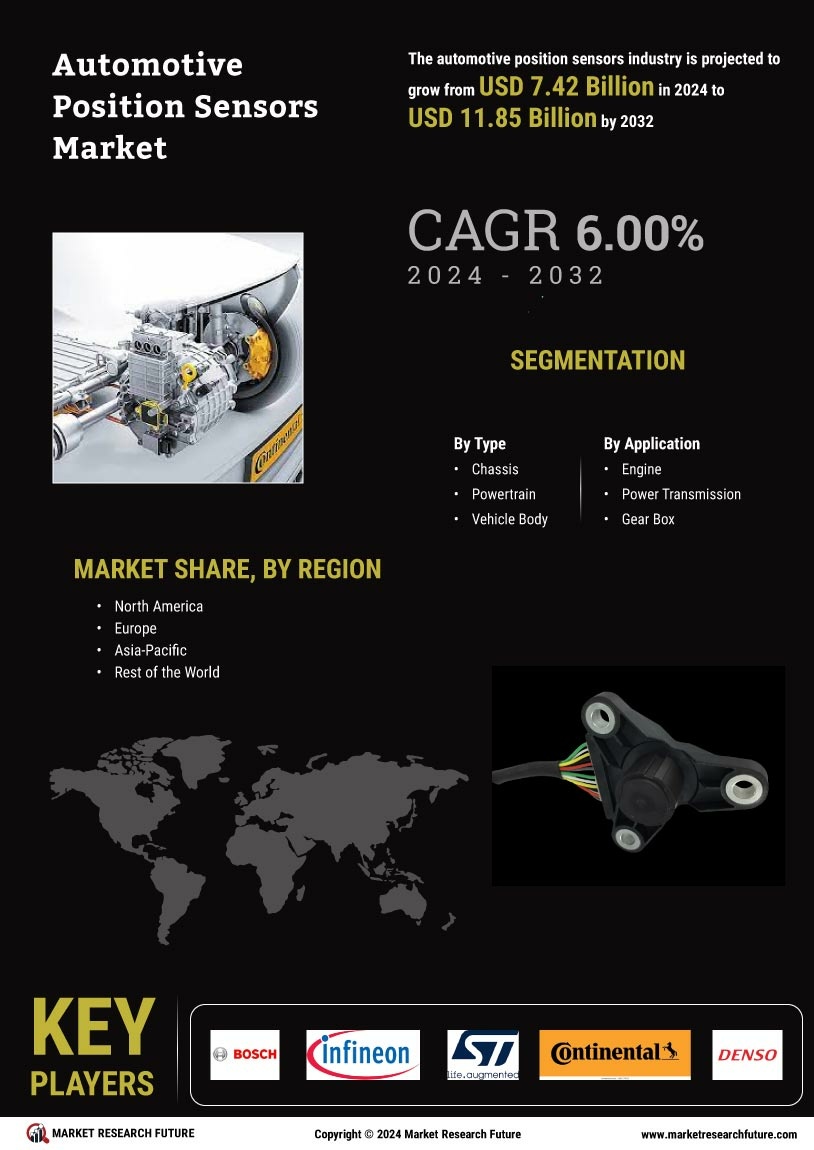Automotive Position Sensors Market Summary
As per MRFR analysis, the Automotive Position Sensors Market Size was estimated at 7.42 USD Billion in 2024. The Automotive Position Sensors industry is projected to grow from 7.865 USD Billion in 2025 to 14.09 USD Billion by 2035, exhibiting a compound annual growth rate (CAGR) of 6.0 during the forecast period 2025 - 2035.
Key Market Trends & Highlights
The Automotive Position Sensors Market is poised for substantial growth driven by technological advancements and evolving consumer expectations.
- The integration of advanced technologies is transforming the automotive position sensors landscape, enhancing functionality and performance.
- North America remains the largest market for automotive position sensors, while Asia-Pacific is emerging as the fastest-growing region.
- In the chassis segment, which holds the largest market share, there is a notable shift towards electric and autonomous vehicles.
- Rising demand for advanced driver assistance systems and increasing focus on vehicle safety regulations are key drivers propelling market growth.
Market Size & Forecast
| 2024 Market Size | 7.42 (USD Billion) |
| 2035 Market Size | 14.09 (USD Billion) |
| CAGR (2025 - 2035) | 6.0% |
Major Players
Bosch (DE), Continental (DE), Denso (JP), Honeywell (US), Infineon Technologies (DE), NXP Semiconductors (NL), TE Connectivity (CH), Sensata Technologies (US), Analog Devices (US)
















Leave a Comment